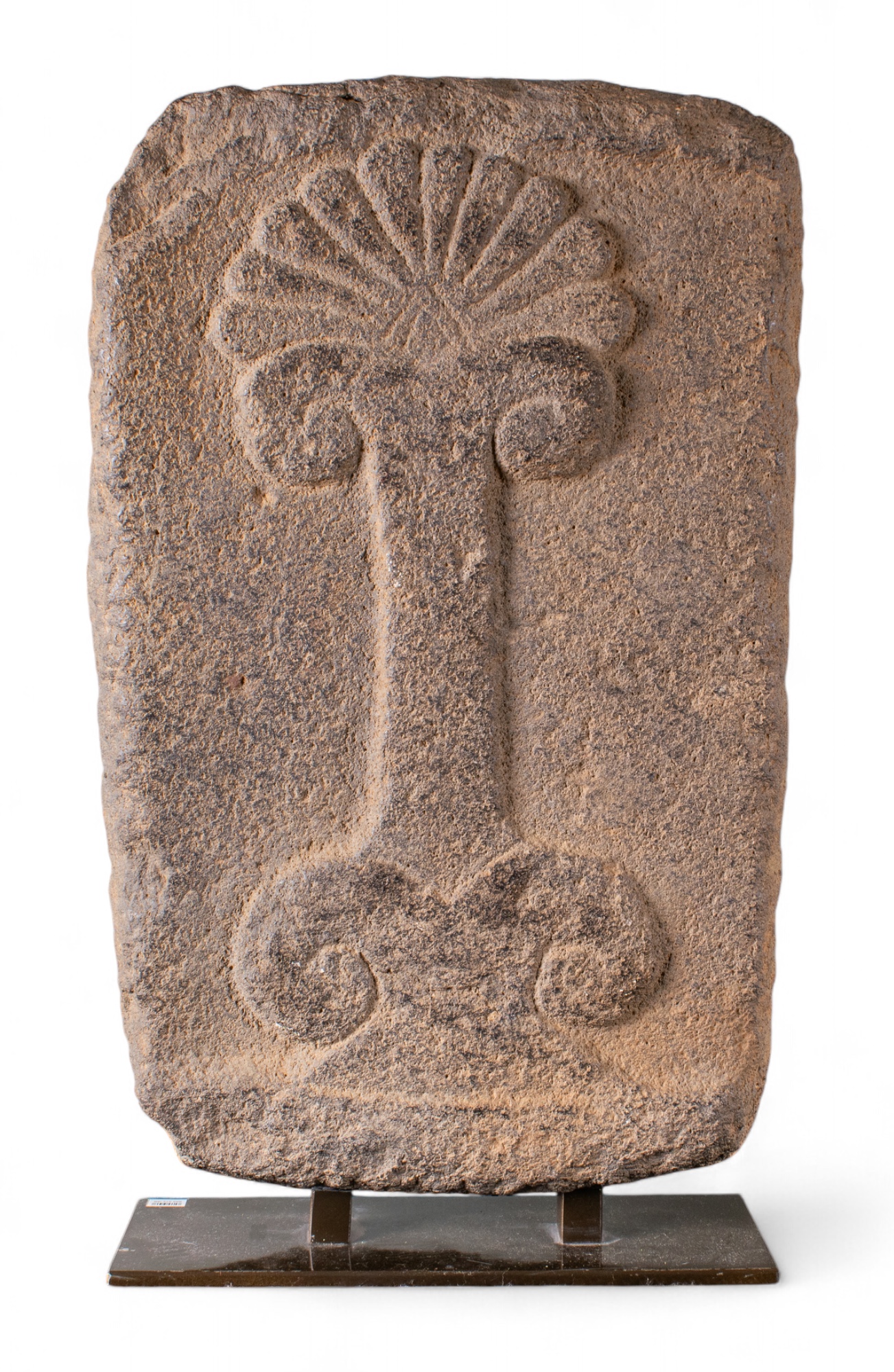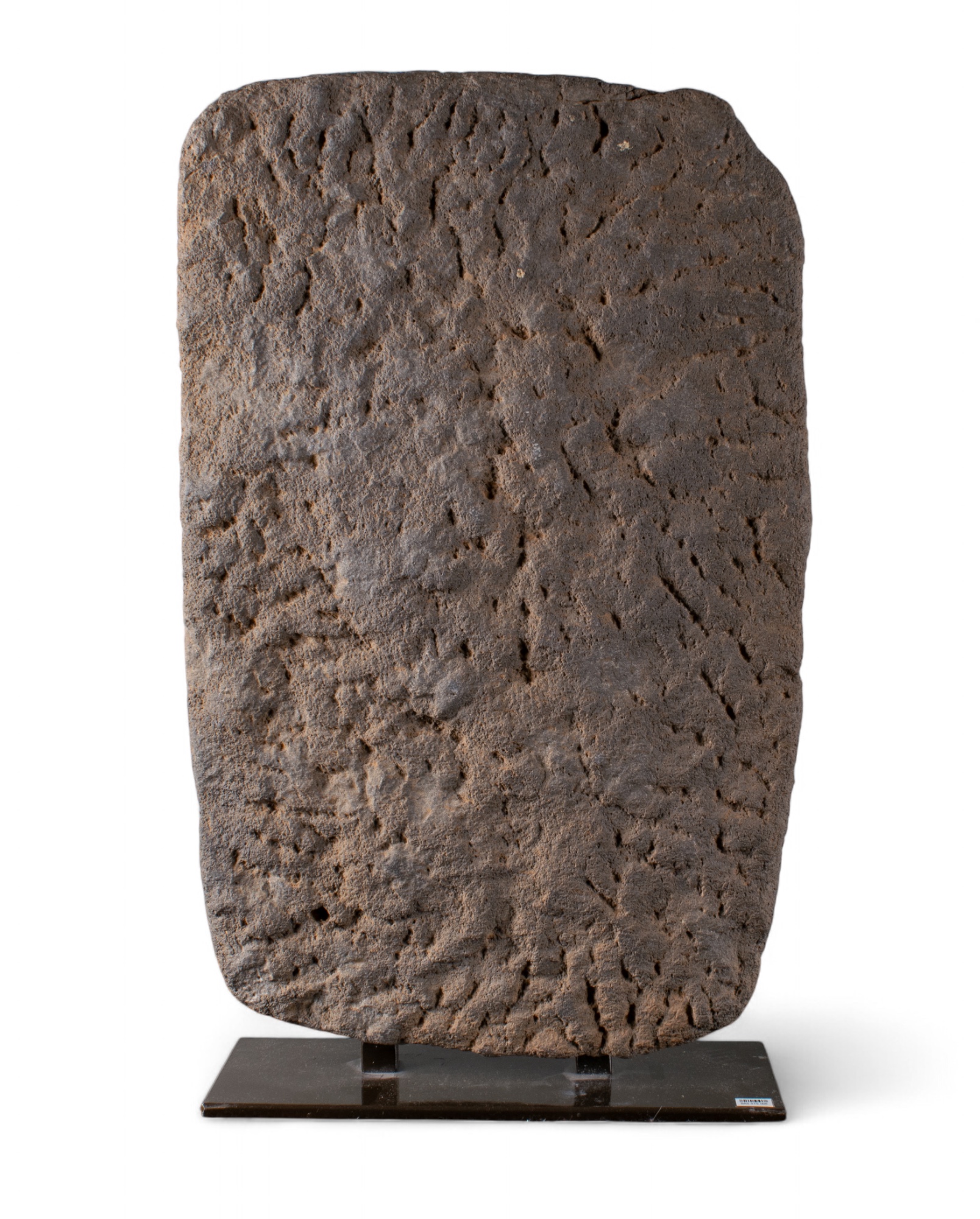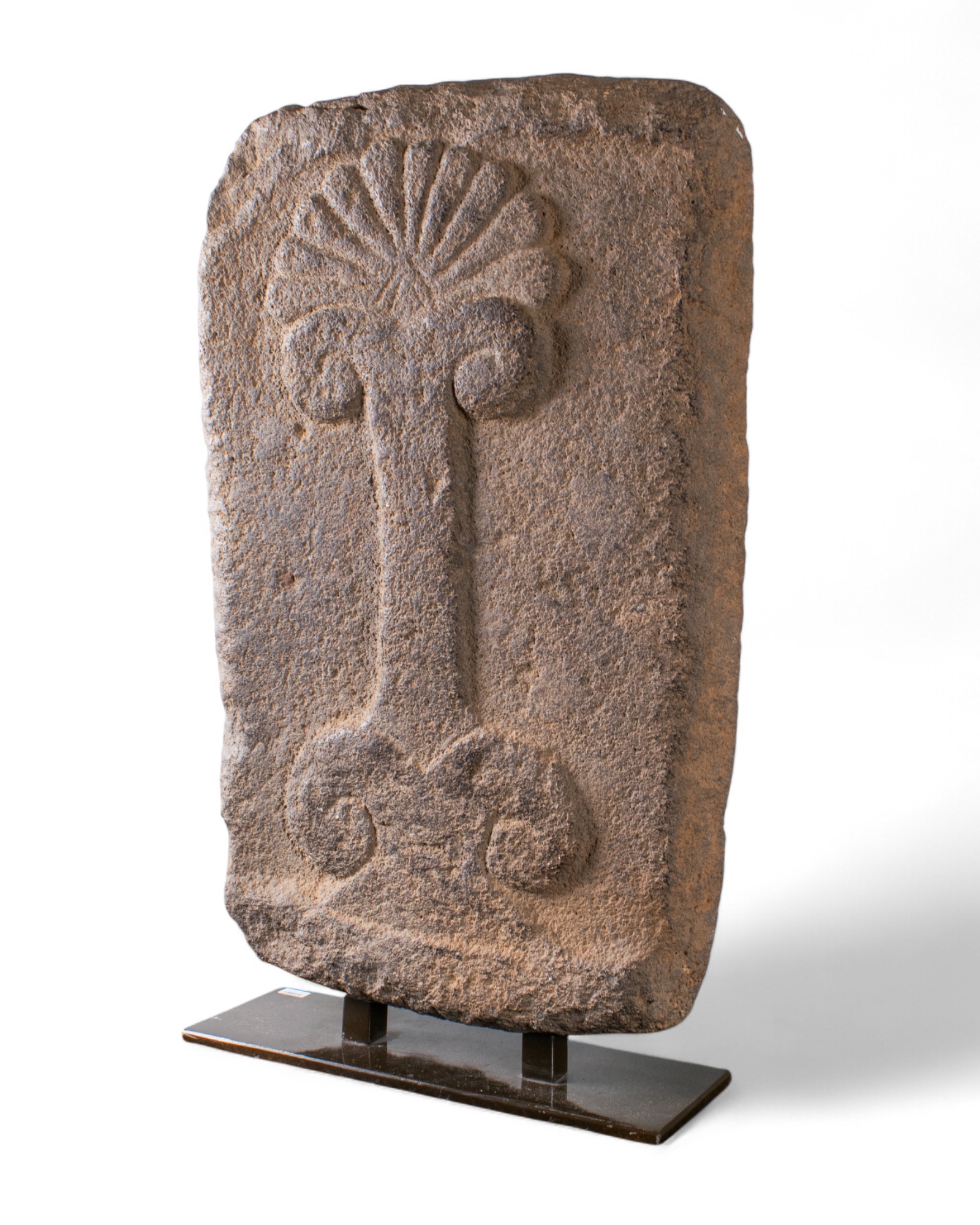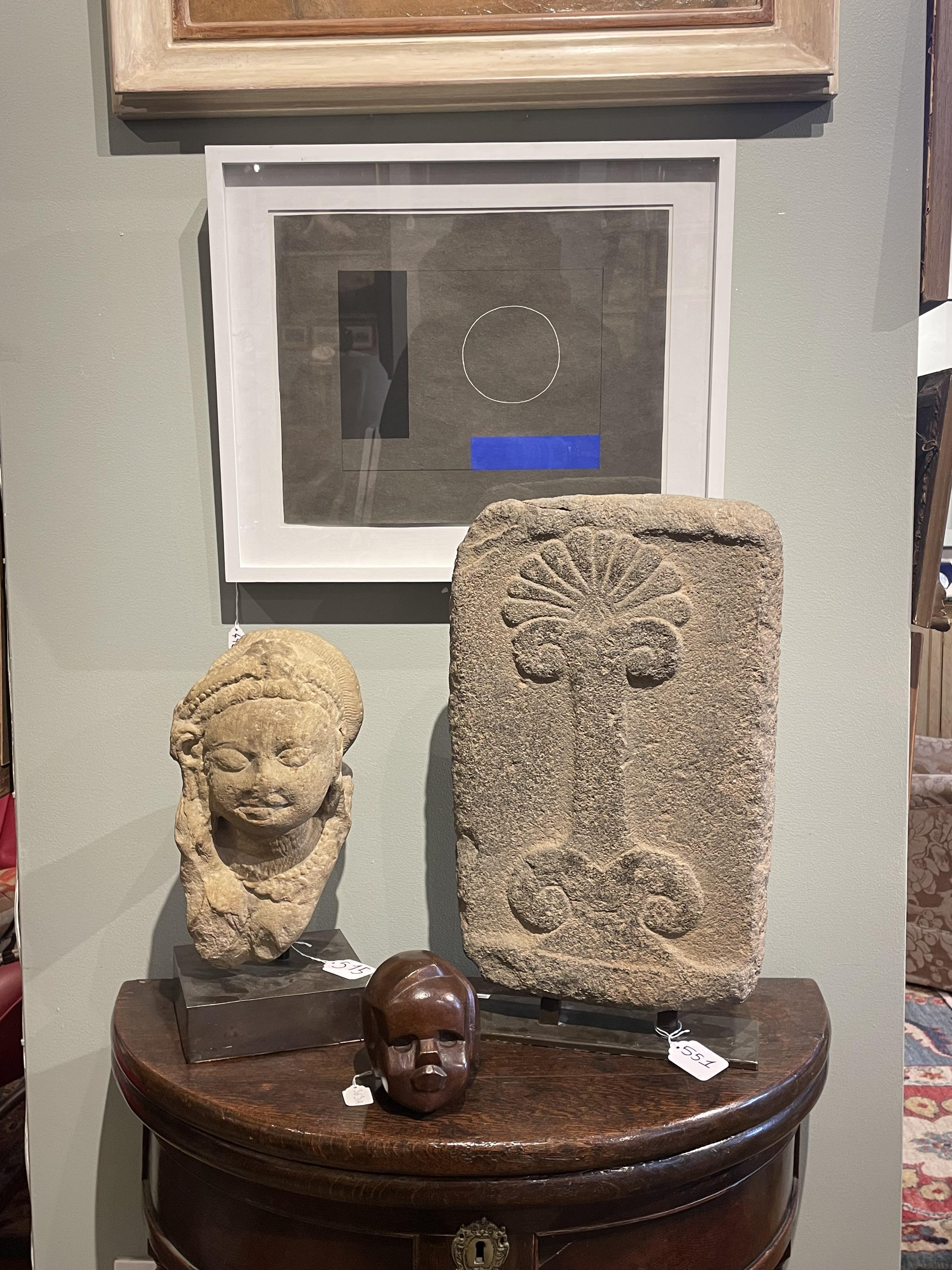551
Near Eastern, 10th-9th century BC, Stela of a palm tree
Near Eastern, 10th-9th century BC Stela of a palm tree Basalt on a metal base Provenance: Acquired by the current owner in 1995; c.f. Christie's New York, June 12th 2002, lot 333 This simple but strikingly realised stylised carving of a date palm dates to the 2nd millennium BC, and comes from what is referred to as the ancient Near East, a term used to correspond roughly to the modern Middle East, encompassing Mesopotamia, Egypt, Iran, Anatolia, the Levant, and the Arabian Peninsula and spanning the Bronze Age and Iron Age, from around 3000 BCE to 330 BC. Artists from the period used such stele to decorate and reinforce the facades of many religious and civil buildings, as part of rich and varied iconography which included historical and religious scenes and themes from the natural world. The stela is carved in basalt, a volcanic rock rich in iron and magnesium which gives it its slightly porous appearance. The palm is represented stylistically with a think trunk between two pairs of volutes, the upper volutes crowned with a halo of ten leaves. This was the usual stylistic representation for this motif. The top of the plaque is delineated by a horizontal line in slight relief. The date palm was probably domesticated c. 6th millennium BC and was widely grown in the Near East. Everything from the tree was used: the fruit for food, the date stones as fodder for animals or as fuel; the leaves in basketry; and the trunk in construction. Dimensions: (incl. base) 21 in. (H) x 13 in. (W) x 3 in. (D)
Near Eastern, 10th-9th century BC Stela of a palm tree Basalt on a metal base Provenance: Acquired by the current owner in 1995; c.f. Christie's New York, June 12th 2002, lot 333 This simple but strikingly realised stylised carving of a date palm dates to the 2nd millennium BC, and comes from what is referred to as the ancient Near East, a term used to correspond roughly to the modern Middle East, encompassing Mesopotamia, Egypt, Iran, Anatolia, the Levant, and the Arabian Peninsula and spanning the Bronze Age and Iron Age, from around 3000 BCE to 330 BC. Artists from the period used such stele to decorate and reinforce the facades of many religious and civil buildings, as part of rich and varied iconography which included historical and religious scenes and themes from the natural world. The stela is carved in basalt, a volcanic rock rich in iron and magnesium which gives it its slightly porous appearance. The palm is represented stylistically with a think trunk between two pairs of volutes, the upper volutes crowned with a halo of ten leaves. This was the usual stylistic representation for this motif. The top of the plaque is delineated by a horizontal line in slight relief. The date palm was probably domesticated c. 6th millennium BC and was widely grown in the Near East. Everything from the tree was used: the fruit for food, the date stones as fodder for animals or as fuel; the leaves in basketry; and the trunk in construction. Dimensions: (incl. base) 21 in. (H) x 13 in. (W) x 3 in. (D)
The Valentine's Auction: To include Old and Modern Masters, Jewellery and other Estate Contents including The Late Baroness Thatcher
Sale Date(s)
Venue Address
For Sloane Street Auctions delivery information please telephone +44 (0) 20 39158340.
Important Information
.
Terms & Conditions
For our Terms & Conditions, please click here.














